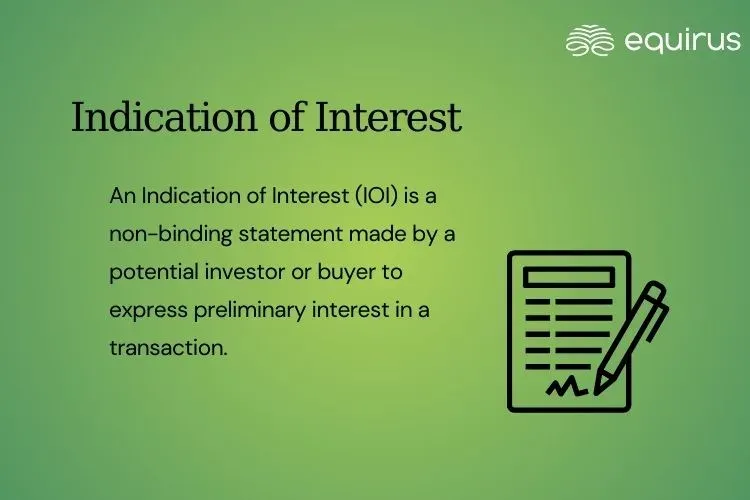Indication of Interest (IOI)

Key Highlights
-
An Indication of Interest (IOI) is a non-binding statement made by a potential investor or buyer to express preliminary interest in a transaction.
-
IOI is used in mergers & acquisitions (M&A), initial public offerings (IPO), private equity/venture capital and real estate or asset sales.
What is Indication of Interest (IOI)?
An Indication of Interest (IOI) is a non-binding statement made by a potential investor or buyer to express preliminary interest in a transaction. It’s often used in IPOs, mergers & acquisitions, or fundraising rounds to signal that a party may want to participate—without making a formal commitment.
Purpose of an IOI
An IOI helps to:
-
Gauge market demand before finalizing a deal.
-
Show that the investor or acquirer is seriously considering the opportunity.
-
Start discussions and move toward deeper negotiations or due diligence.
-
Give the seller or issuer a sense of valuation and deal structure expectations.
When is an IOI Used?
-
Mergers & Acquisitions (M&A): A buyer sends an IOI before submitting a Letter of Intent (LOI).
-
Initial Public Offerings (IPO): Institutional investors submit IOIs to show demand for shares before pricing.
-
Private Equity/Venture Capital: Firms express interest in investing in a startup or company.
-
Real Estate or Asset Sales: Used to pre-qualify buyers for large transactions.
What an IOI Typically Includes?
- Name of the interested party
- Target company or asset
- Indicative purchase price or investment amount
- Deal structure (e.g., cash, stock)
- Proposed timeline for due diligence and closing
- Conditions for moving forward
- Statement that the IOI is non-binding
IOI vs LOI (Letter of Intent)
| Aspect | IOI | LOI |
|---|---|---|
| Binding | No | Partially or fully binding (in parts) |
| Detail Level | High-level/Indicative | More specific and detailed |
| Timing | Early in process | Closer to finalizing the deal |
| Use Case | To express interest | To outline agreed-upon key terms |
